#writing action
Text
How Authors Write Fictional Wars
Some of our favorite novels include wars. They might stretch over a trilogy or build within a single book. Writing one might seem staggering, but it just takes a different planning approach. Use these tips to write a fictional war for your next story and make your readers feel like it really happened.
Foundational Factors to Consider
1. Your Opposing Sides
Wars always have at least two opposing sides. Start there and develop them before deciding if you need a third or fourth side involved. Cover details like:
What does each side want?
What would each side settle for?
What is each side’s worst-case scenario?
What is each side’s hard no? (What wouldn’t they sacrifice or do to win their cause?)
2. Who Supports the Opposing Sides and Why
As a war progresses, each side loses resources. They start running out of money, soldiers, and whatever public support they had when they started the war due to citizens losing their loved ones or sacrificing for the cause.
Your protagonist and antagonist will need to ask for help eventually. Who would support them and why?
There are numerous reasons why someone might pick one side of a war over another. Politics and economics are often the first things leaders consider. The morality behind each side is another factor.
Consider the American Revolution. Many historians believe America would have lost without France sending money, troops, food, and supplies. Why would France support a budding nation over Great Britain? People argue it was because the French:
Wanted to humiliate the British king
Wanted to hurt their British military rival by partnering with America
Wanted to weaken the British kingdom by ending the colonial taxes they benefited from
Wanted to gain power on a global standing by overcoming Great Britain and rising as America’s first ally
These reasons are great examples of what your novel could include. Another country, kingdom, or group could rise in sudden support for your protagonist or antagonist, ultimately throwing chaos into the determined path of war for better or worse.
3. The War’s Terrain
People can break into battle almost anywhere, depending on your fictional world. Your characters could fight:
On land
On sea
In space
In the air
Underground
Online
Some terrain also comes with other considerations. If your war happens on an ocean, will storms and hurricanes affect battles or the ultimate outcome? How will the soldiers and leaders on both sides deal with the weather?
Note these possibilities as you plan your novel. You can add them in as background or crucial plot devices once you have a skeletal structure in place for your story.
Need help remembering everything you’ve imagined? Try making a map and keeping it wherever you write.
4. What Would Make Each Side More or Less Powerful
There’s always something that could give one side an advantage over the other. It’s often in an unexpected way, although you could make the advantage a goal. The bad guys might feel confident in their ability to win, but they have a secret mission to develop a new weapon just to give them a greater advantage.
Other factors to consider would be one side or another doing something like:
Discovering or enacting a magic system
Eliminating a crucial resource their enemy depends on
Removing funding that makes their enemy able to fight by befriending or overcoming their enemy’s financial backers
Changing the positive or negative public perception of the other side’s reason for fighting to change national morale
Doing something that makes one side’s leaders more or less moral (which could change public perception, the soldiers’ vigor, the leadership’s advisory team together, etc.)
6. What Kinds of Conflict You’ll Write
There are two types of basic conflict you’ll likely write when navigating a fictional war. You may not need both if your story is shorter, but adding both makes the plot more realistic.
First, there’s external conflict. You’ll have at least two opposing sides on some kind of battlefield, sneaking around on spy missions, planning surprise attacks, etc.
Secondly, there’s internal conflict. Soldiers might start fighting amongst each other, people in leadership positions could lose trust in each other, citizens might turn on their country’s cause for one reason or another, etc.
7. What Weaponry Your Characters Will Use
The weapons used in your war depend on numerous factors. It will draw from the genre you’re writing, the time period your story takes place, the advancements made in each civilization’s weaponry prior to the war, and any advancements made while the war goes on.
Examples of these could be:
Guns
Swords
Bows
Bombs
Drones
Armed ships
Armed space ships
You should also consider if one side’s weaponry is more likely to change during the course of the war. That’s more plausible if your story or characters change locations where regional cultures use different weapons. Also if the war spans years, people will naturally develop new weaponry during that time.
If you want extra details to daydream about, think about which weapons will become outdated during your story. Some will prove less useful due to complicated usage or cleaning. They also may not work, like if your science fiction characters follow their enemy underwater, but their laser guns require a dry atmosphere to function.
Include Emotional Plot Arcs
Writing always involves some kind of emotional work that results in a plot arc. It keeps the reader engaged by evoking their core feelings. That’s what makes a novel different from a textbook (in a very basic sense).
Work on details like these to find what emotions will be most present and relevant to your story:
Your overall theme
Your characters and what they experience
The action your characters will go through
How the above action will change your characters by affecting their loved ones
What your characters’ goals mean to them emotionally
If your characters’ will undergo things that change their perception of their world, leaders, country, or themselves
You don’t need all of these things to have an emotional plot arc, but they’re relatable human elements that can drive your plot right into your readers’ hearts.
Avoid Some War Story Tropes
Tropes have a bad reputation that I don’t think is entirely deserved. People recognize them as overdone stereotypes, but sometimes they’re useful.
When you’re writing a war, you’re going to have necessary tropes like:
The hero
The unit or squad
The antagonist
What they undergo and who they become is how you make them fresh concepts for your readers.
Some tropes aren’t helpful because they’re what readers expect from every story. If you give them what they expect, your story isn’t as engaging (unless you get the occasional reader who exclusively reads war novels and never tires of overdone tropes).
Keep these in mind as things to avoid, unless you have an ingenious way to make them a brand-new experience:
One soldier dying in another’s arms
A character dying by going out “in a blaze of glory”
Characters using guns in ways that are obviously wrong (i.e., firing more bullets than the gun-type/model holds)
Getting military rank incorrect (if your characters exist in a real-world, already existing military structure)
Injury-proof characters (even your protagonist will eventually encounter some physical harm, whether it’s illness in bad weather or getting shot on a battlefield)
You can check out this great resource to discover more tropes to avoid/consider as you draft your plot outline.
-----
If it feels like writing a war over the course of a book or a series is challenging, you’re not alone. There’s a lot to consider to make it have an engaging flow.
Keep notes on things like these to develop your story as much as possible before starting your first draft. You can always go back and add or edit things out as needed while developing it. Writers do this all the time—you don’t need to get any manuscript perfect on your first try.
#writing war#writing warfare#writeblr#writing advice#writing tips#writers of tumblr#creative writing#writing#writing inspiration#writing community#writing help#writing resources#writing action#writing conflict#writing batlles
537 notes
·
View notes
Text
ᴡʀɪᴛɪɴɢ ꜰɪɢʜᴛ ꜱᴄᴇɴᴇꜱ ɪɴ ᴛᴡᴇɴᴛʏ ᴘᴏɪɴᴛꜱ
how is this fight scene crucial to the plot?
how does it reinforce the characters' beliefs?
what are the stakes?
keep the action moving
keep sentences short and punchy
how does this impact the characters mentally?
remove unnecessary sentences
what mistakes reflect the character?
how do their flaws impact the fight?
what is the goal of the fight?
what started it?
would the plot be the same without the fight? in that case, you may not need it.
mix dialogue and action
read fight scenes—Macbeth, the princess bride, Percy Jackson
watch fight scenes and rewrite them in your own words
how does the setting affect the tone and mood?
avoid blow-by-blow
research the weapons and techniques used for accuracy
what are the characters thinking?
show the aftermath.
requested by anon
#fight scene#lyralit#writerblr#creative writing#writers#writers block#writing prompts#scene writing#fights#writing action#writing ideas#writblr#writing
4K notes
·
View notes
Text
It's kinda insane how much work I have to put in for a fight scene. Like, idk if this is just me, but I have to outline beforehand like crazy. I have to put in generally what happens, then split it up into multiple active and reactive events, escalations, de-escalations, etc...
And then when I get to writing I have to figure out choreography???
It's usually worth it in the end, and I've gotten decent action out of it...just wish it didn't take so long
Last time, it was, like, a whole group training scene I had to write. It took, like, a month to write that chapter. In all fairness, there was a scene before that, but I think most of the time was the training scene. This is a 1v1 sparring session, which is much easier
It's like 1am but whatever, I made progress! I'll hopefully be able to write the scene tomorrow... Can't wait. Both genuinely because I legitimately want to write the scene but also choreography is hard.
#writing blog#writers on tumblr#writer things#writing community#the secret portal#tsp#teaspoon#writing progress#writing update#wip progress#wip update#wip#my wip#action scenes#writing fight scenes#fight scene#writing action#writing life
23 notes
·
View notes
Text
I’m so proud of myself! I wrote one page of my fanfic today 😄😄😄
Maybe if we’re lucky, we’ll make it to two!!!
11 notes
·
View notes
Text
Writeblr, how do you write fight scenes?
How do you fasten pacing, how do you write actions with rhythm? What are good techniques for dynamic fight and action scenes?
Reblog this with a snippet of your fight scene! Also, tag another writer you want to ask this question to!
#writers block#writers#writing#writing tips#writeblr#writerscorner#writblr#writers on tumblr#writing questions#writing action#writing fights#action#reblog to boost#writing tag game#writing tag#writing tips and tricks#writing tip#tag another writer
15 notes
·
View notes
Text
Random Fight Scene Things That I Enjoy Very Much :)))
Characters who are really protective of each other
Ducking/cowering behind someone else
Witty, breathless roasts in the middle of a fight
Explosions if you can figure out a way to make it work, they make fight scenes very chaotic and chaos fuels me
The good ol’ fashioned dagger to the throat as leverage
Protecting 👏 children 👏 and 👏 teen 👏 characters 👏
Very passionate about that one
Intentionally targeting someone’s worst fear, whether that be water, a specific loved one being hurt, or a traumatic memory of something they did in the past
Spear/dagger through shirts to pin a character to a wall
Simply running away *oops*
Falling/tripping on things like logs, crates, shoelaces...a character’s own feet...?
Animal sidekicks attacking opponents to protect their owners
Throwing random items the characters find, sticks, vases, jars, rocks, pillows, lamps...the animal sidekick from before
Heck, knock a tree down onto someone’s head, I don’t care
A character underestimating themselves, and then they save someone without thinking, and it’s kind of a moment like...
”You just saved my life.”
“Huh, guess I did. Weird.”
#writing#writing tips#writing prompts#prompt#dialogue prompt#writing ideas#fight scenes#action scenes#writing action scenes#writing fight scenes#characters#oc#ocs#fight scene tips#action scene tips#writing action#writing fights#writing advice#writing tips and tricks#writing side of tumblr#get those gears in that beautiful head of yours turning
169 notes
·
View notes
Text
A lot of people say they can't write action and then proceed to write smut. My darling dears, action is just smut with little to no use of the word "cock" and "hole". If you can write decent smut, I promise you that with a bit of research and a synonyms website pulled up you can write some solid action scenes.
#writing#writing tips#writing advice#writing action#writing smut#tierney posts#authors#fiction#writing struggles#writing stories#smut writing#action writing#wrtiblr#writing help#writeblr#writerscommunity#writers and poets#writers on tumblr#authors of tumblr#authors on tumblr
6 notes
·
View notes
Text
Action Scenes: Adding Uniqueness
Keeping action scenes unique will help hold the reader's interest. Learn how to add more variability and interest to action scenes in this article.
One of my pet peeves with action scenes, whether in film or book form, is repetitive action. I can only watch the same chase so many times or read endless thrusts and parries for so many pages. Keep action scenes interesting by making them unique.
Adding Unique Elements
Every fight, explosion, or gunshot needs to have at least some level of uniqueness to it in order to keep the various scenes…

View On WordPress
#action#action goals#action scene tips#action scenes#action setting#action tempo#describing action#how to write action#how to write action scenes#setting#story setting#unique action scenes#weaponry#weaponry in fiction#writing action#writing action scenes
13 notes
·
View notes
Text
Writing Great Action Scenes
[by James Scott Bell]
At a conference some time ago I was on a panel with some fellow thriller writers. During the Q & A, we got this question from the floor: How can I learn to write a good action scene?
I answered first. I told the questioner that it's what happens inside the character that's the key, and you can make that implicit or explicit by using all the elements of fiction writing–-dialogue, internal thoughts, description, and action.

I recommended he read how Dean Koontz does it, especially in what was his first breakout bestseller, Whispers (1980). There Koontz has an action scene (an attempted rape) that lasts 17 pages (that's right, 17 pages!) all taking place within the close confines of a house.
Another panelist protested (in a good-natured and professional manner). He said action needs to be "realistic." For instance, when a gunshot is fired nobody has time to think. It all happens too fast. If they're shot, the pain comes, and they will not be reflecting on anything. They'll just be in pain.
This was grist for a great debate. I licked my chops but, unfortunately, we ran out of time. I never got a chance to respond.
Now I will.
I would have said, first, that a gunshot does not cover the wide spectrum of action. In the Koontz scene from Whispers, we have someone stalking the Lead. No guns. So that example is of limited value.
But further, and even more important: Fiction is not reality! Fiction is the stylized rendition of reality for emotional effect.
That's so important, I'll say it again: Fiction is the stylized rendition of reality for emotional effect.
Reality is boring. Reality is not drama. Reality is to be avoided at all costs ("We must stay drunk on writing," Ray Bradbury once said, "so reality does not destroy us.")
Hitchcock's Axiom holds that a great story is life with the dull bits taken out. Reality has dull bits. Lots of them. Fiction, if it works, does not.
A thriller writer wants the reader to believe he or she is vicariously experiencing the story. We use techniques to engage the reader's emotions all along the way. If there is no emotional hook, there is no thrill, no matter how "real" the writing seems.
Let's have a look at a couple of clips from Whispers. Hilary Thomas, a successful screenwriter, comes home to discover that Bruno Frye, someone she'd met one time, is waiting for her, and not for a game of cribbage.
She cleared her throat nervously. "What are you doing here?"
"Came to see you."
"Why?"
"Just had to see you again."
"About what?"
He was still grinning. He had a tense, predatory look. His was the smile of the wolf just before it closed its hungry jaws on the cornered rabbit.
Koontz breaks into the dialogue exchange for some description. The effect is like slow motion, which is another key to a good action scene. In essence, you slow down "real time" to create the feeling and tone you desire.
He took a step toward her.
She knew then, beyond doubt, what he wanted. But it was crazy, unthinkable. Why would a wealthy man of his high social position travel hundreds of miles to risk his fortune, reputation, and freedom for one brief violent moment of forced sex?
Now Koontz inserts a thought. In real time, when a rapist takes a step toward a victim, there would probably be no reflection, no pondering. But fiction enhances moments like this. Koontz is stretching the tension. He wants the reader taut while furiously flipping pages.
But 17 of them? Is Koontz insane? Or is he one of the best selling writers in history for a reason?
In fact, Koontz is a consummate pro who knows exactly what he's doing. He even names it a couple of pages in:
Abruptly, the world was a slow-motion movie. Each second seemed like a minute. She watched him approach as if he were a creature in a nightmare, as if the atmosphere had suddenly become thick as syrup.
That, my friends, is stylized action for emotional effect. If you'd like to grumble about that––complain that it isn't "like reality"––you may send your objections directly to Dean Koontz, who gives his mailing address in the back of his books.
Let me know what he says.
Meanwhile, if you're looking to sell your fiction, learn to use the tools. Especially in action scenes.
JAMES SCOTT BELL is a winner of the International Thriller Writers Award and the author of the #1 bestseller for writers, Plot & Structure (Writer’s Digest Books). He served as fiction columnist for Writer's Digest magazine and has written several popular writing books, including How to Write Dazzling Dialogue, Write Your Novel From the Middle, Super Structure, and How to Make a Living as a Writer. Visit his website: www.jamesscottbell.com
43 notes
·
View notes
Text
Does the Armour in Your Novel Even Work?

Imagine there is about to be a big battle in a fantasy story.
Chances are, you are thinking about groups of people running with weapons and armour. Well, there is a problem with that protective garment often described. No, I am not talking about historical inaccuracies, structural nit-picking, or anything like that. Instead, the problem is with the protective aspects of the armour itself. Somehow, it seems that writers find it hard to remember to let armour do what it is made to do.

Commonly in fantasy fiction, there is a dramatic scene where a hero, companion, or love interest, is fighting an antagonist. The protagonist might even be able to hold their own, but then the antagonist lunges with a sword and it is all over. That sword hits exactly where armour is designed to protect, and yet the protagonist is mortally injured with little effort. The armour, in the end, was there for the ✨fashion.✨
To tell you the truth, you can let your characters look as glamourous as you want, but in case you are like me and this armour detail is a tiny pet-peeve, here are some suggestions on how to fix it in your own writing.
Do note that these suggestions are geared towards medieval-fantasy type armour, but most the tips are useable with all armour.

1. Research Armour Types
Most fantasy novels stick to just leather or plate armour, even when other armour might be more useful in the situation. For example, an archer would want different armour from a jouster, and someone expecting a rainfall of arrows would want different armour than someone fighting a war hammer.
One example of little used armour is the gambeson. A gambeson is a type of armour that basically is a padded jacket where the stuffing acts to cushion blows. Because of this, it was even worn under plate armour. You might picture someone looking like a marshmallow man, but gambeson can actually look very nice. The downfall? It is very hot to wear in the summer months.
There is also display armour where the rich person has the armour created as a show of strength. That delicately decorated armour is made just for looks, and will never be used in actual battle.
For a starting point, look up:
Gambeson
Scale Armour
Boiled Leather Armour
Mail (or maille) Armour
Plate Armour
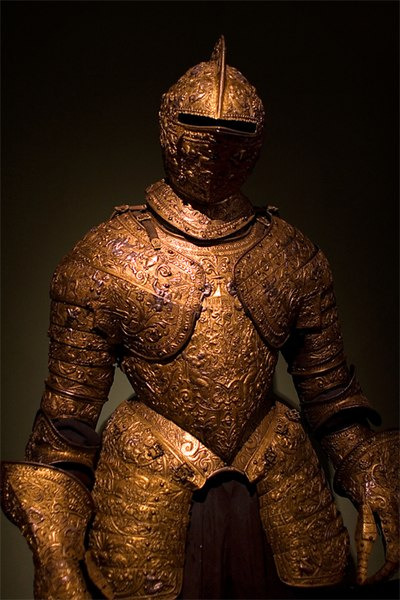
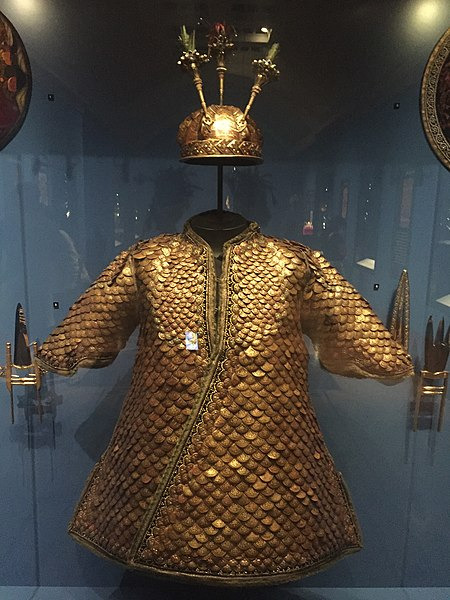

What I listed above is only just some of the types of armour, and even they have different types in their own categories. Here is one video to help your search.
youtube

2. Research Armour Strengths

To get the full scope of the strength of armour, I suggest going on Youtube and searching for something like “medieval armour test” for videos like this one as well as ones on maille, and gambeson. Essentially, these different armours protect from a lot. If they didn’t, people would not bother carrying the weight.
This is also handy for learning where the weak points are in armour. This way, if you are going to write a fight, your antagonist knows exactly where to hit to injure.

3. Learn the Myths
For example, this video talks about the myth that armour is impossible to move in, while this video talks about the myth saying that all armour is incredibly heavy.

4. Watch Some Fights
There are people in our era who wear armour and beat each other with weapons. Picture UFC but with weapons and armour, and that is a bit close to what they do. There can be broken bones, and (at least for the ones in my area) first-aid kits are always close.
While their armour, weapons, and techniques, might not all be perfectly historically accurate all the time, it helps you realize just how hard fighting someone in armour really is. It is not just that they are doing physical activity; it is also that they are trying to breathe in a helmet that restricts oxygen. If that is not enough, most fighters say that uncovered armour is deadly under the heat of the sun. Basically, you are cooked like a tin can over flame. This is one reason to wear surcoats over armour, but even the fighters drink insane amounts of water.
For examples, YouTube “full armour combat.” Take notes on what the fighters complain about (as well as what type of armour they are wearing, just in case the problem is exclusive to the specific type), and also when damages or injuries occur.
#writing fight scenes#fight scenes#writing action#write action#writing fantasy#writingfantasy#fantasy writer#armour#armor#write#writer#writing#Youtube#WritingAction#WorldbuildingBattles
5 notes
·
View notes
Text
Catalysts for Your Rising Action
Someone close to your protagonist dies
Your protagonist loses a memento
A challenge makes your protagonist run away from their life
Your main character accomplishes a goal and feels unsatisfied
The goal your protagonist has always wanted becomes suddenly impossible to achieve
Your main character wants to change someone's life for the better
Revenge is the only thing on your protagonist's mind
Your main character sees a community need and strives to solve it
Something morally or ethically changes in your protagonist that makes them interact with the world in a fundamentally different way
#plot#action#writing action#plot development#writeblr#writing advice#writing tips#writing inspiration#writing community#creative writing#writing help#writers of tumblr#writing#writing resources#plot device#character arc#character creation#character building#writing characters
288 notes
·
View notes
Note
7. What’s an element of writing you struggle with the most (and why do you think that is)?
I think it's between action and dialogue? When it comes to dialogue, I try to make it sound as organic as possible while also staying true to a character's personality and mannerisms. I find this to be especially hard for Alucard, since there are times where he speaks eloquently and other times where he'll say "goddamn punk" or "lick the devil's ass". Granted, the latter phrase was said during the Gonzo TV show which isn't technically canon, but damn if it isn't hilarious lmao. I also tend to mesh Gonzo!Alucard and OVA!Alucard together when I'm writing for him since there are aspects in both that I like.I think dialogue can be a challenge for me because I'm so worried about it not sounding right for the character that is speaking. Not only that, but I sometimes get the urge to make them say something witty or funny even though the situation doesn't really call for it. My inability to take something seriously for very long is one of my downfalls as a writer lol.
With action, I struggle in trying to describe a scene well so that the reader can almost vividly picture it in their head while also making it fast-paced. You don't want to drag a single moment out too long or the reader might lose interest or get confused when the next scene happens. In fact, this is something that I need to do in the current chapter that I'm working on that I've kind of been dreading. It isn't chock-full of action, but action does occur and I want it to read well. I sort of freeze up when it comes to planning and writing action. I also tend to reread scenes and rewriting them to the point that I no longer know what is the best course of action.
2 notes
·
View notes
Video
youtube
Having Good Narrative Variation
#youtube#tiktok#writing advice#writers ramble#writing podcast#writing channel#authortube#writing dialogue#writing action#writing description#writing interority#ceemtaylor
0 notes
Text


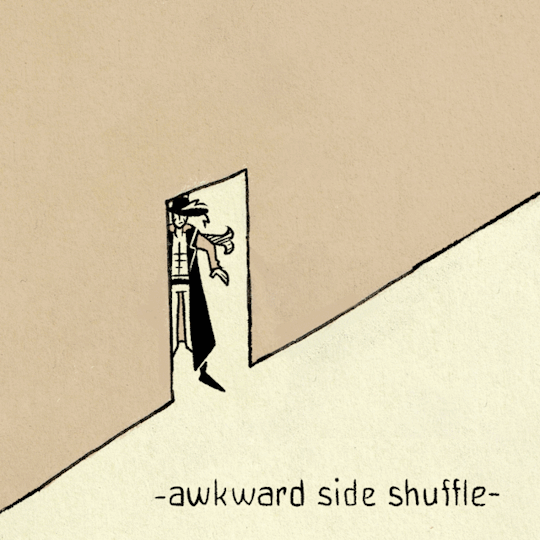
Be real with me. You're sitting in a bar and a 𝔴𝔞𝔯𝔩𝔬𝔯𝔡 𝔬𝔣 𝔱𝔥𝔢 𝔰𝔢𝔞 with a massive sword rams into the door. Do you or do you not laugh
#one piece#dracule mihawk#one piece live action#i wasn't planning on posting this but a good old shitpost is always enjoyable in a while#can you believe i've been writing with a fountain pen my whole life yet i am the most mediocre calligrapher to bless this earth ?
12K notes
·
View notes
Text
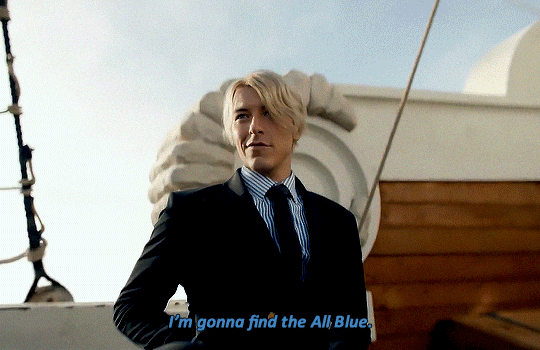


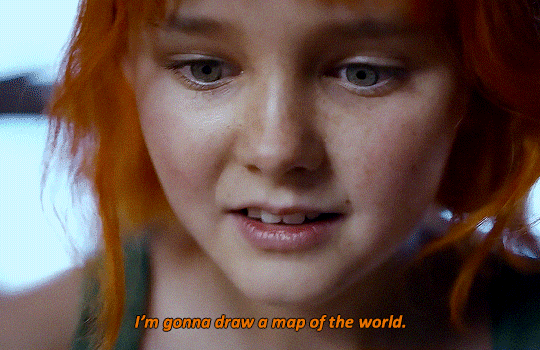
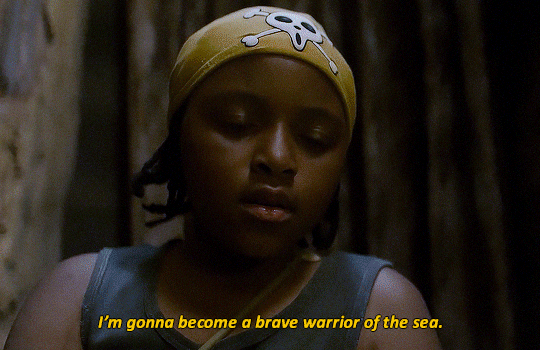
the strawhats & their dreams
#one piece#one piece live action#opla#opla spoilers#luffy#zoro#nami#ussop#sanji#one piece netflix#netflixedit#daily netflix#mycreations#whoever in the writing team decided to feature the kid characters#may both sides of your pillow be cool tonight#they make me feel Insane
21K notes
·
View notes
Text
The Dos and Don'ts of Writing Action Scenes
Action scenes are the pulse-pounding, heart-racing moments in a story where characters face danger, make split-second decisions, and confront conflict head-on. Whether it’s a thrilling swordfight, a high-speed car chase, or a tense standoff, writing action scenes can be a challenging but rewarding endeavor. In this exploration of the dos and don’ts of writing action scenes, we’ll share best…
View On WordPress
#Action Scenes#Action Sequences#Character Emotion#Creating Tension#Engaging the Senses#Immersive Writing#Show Don&039;t Tell#Writing Action#Writing Craft#Writing Intensity#Writing Tips
0 notes